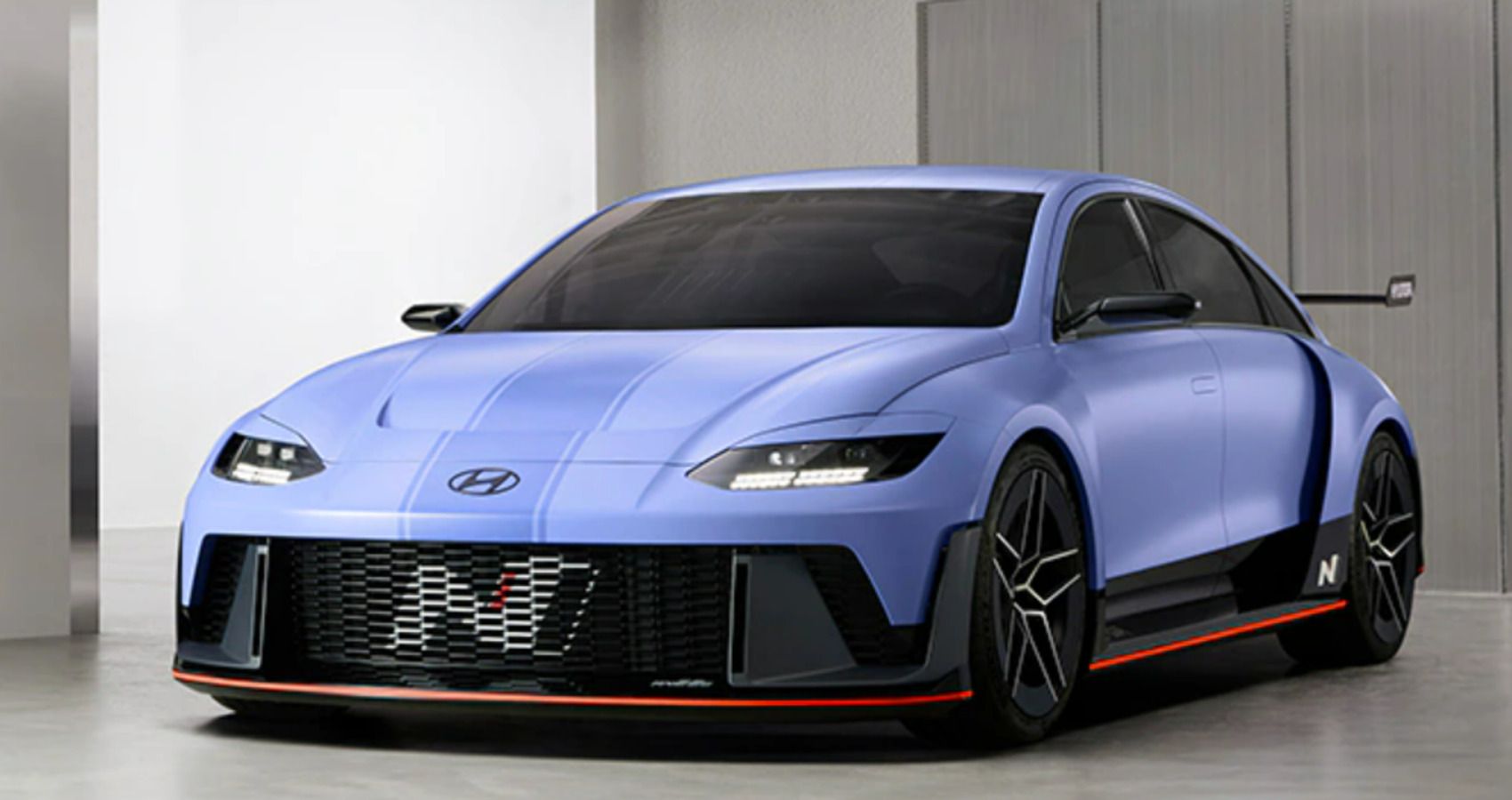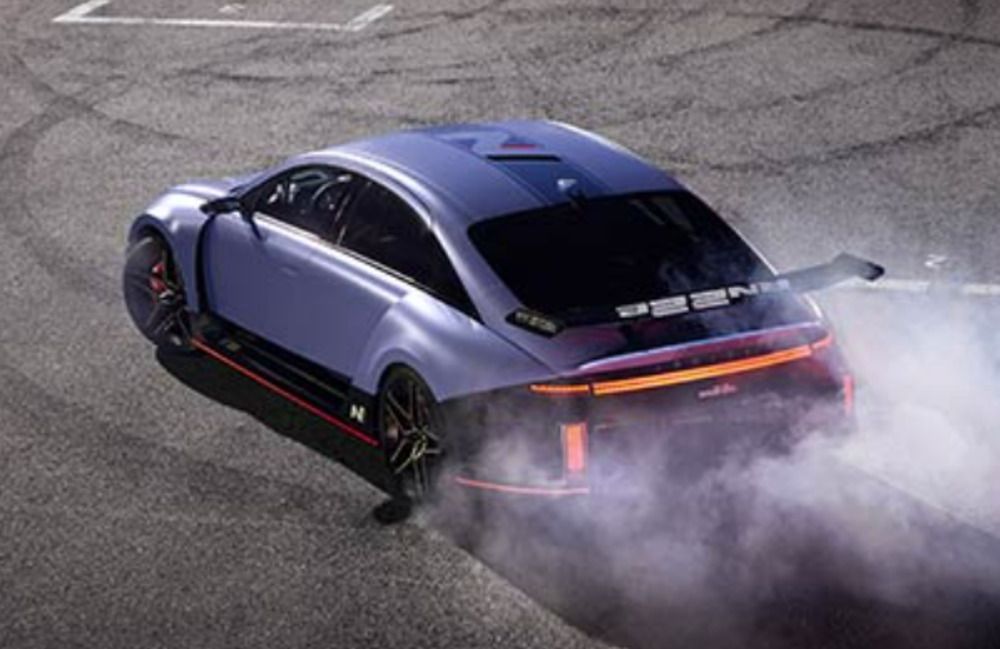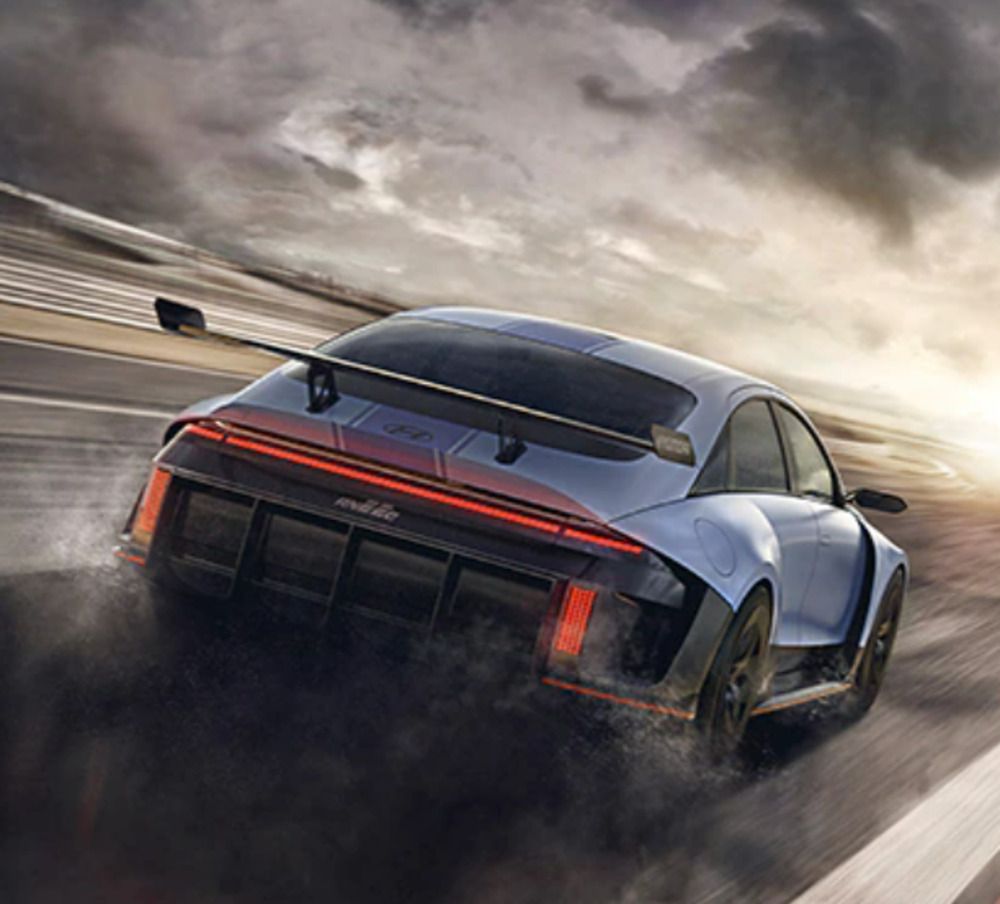Hyundai has been working hard on its electrification strategy for years with the ambition to sell 1.87 million electric vehicles (EVs) each year by 2030. As a part of this strategy, the maker has been ramping up their production as well as their line-up of available vehicles. One of their most recent concepts, the RN22e is a spectacular track-ready high-performance EV.
What is more, the technology in the RN22e (as well as the styling and design cues) gives insight into Hyundai’s future and the direction of its N division. The N division of Hyundai is responsible for the highest-performance vehicles from the brand, including their iconic i30 N and many other sports models.
It is likely that the future of the N division will closely mirror that of the zero-emission performance RN22e. With many brands focusing on sustainable technologies and working to up the ante on speed and ability as well, Hyundai’s dedication to investing in these arenas will help it to remain competitive.
Let’s take a closer look at the RN22e and what it means for Hyundai’s upcoming N division EV technology!
Specifications And Design Of The RN22e
Although the RN22e was never designed for production (rather, to demonstrate Hyundai’s technology), it is not too hard to look beyond the intended purpose to see the potential production car beneath. The concept is set upon Hyundai’s existing E-GMP platform (the same as the Ioniq 5) and it is fairly apparent that we are really looking at the future of the Ioniq in general (likely the Ioniq 6).
The 800-volt architecture of the platform is hardly new to the brand. However, Hyundai recently announced a higher output and all-wheel-drive powertrain as a debut for the N division iteration of the Ioniq 5. The NR22e features many of the same upgrades seen on other recent offerings from Hyundai and its partners (such as the Kia EV6 GT) and the concept reaches an output peak of 577 horsepower (430-kW) and up to 546 lb.-ft of torque.
Hyundai confirmed that the motors on the RN22e are the same used by Kia, which include a rear motor that utilizes a dual-stage inverter that showcases silicon carbide semiconductors. Unique to the RN22e, though, is the twin-clutch rear differential that allows for all power from the rear motor to divert to either side. A 77.4 kWh battery pack that has a range of 250 miles powers the engines. The RN22e can reach speeds of 161 MPH and accelerates to 60 MPH in just 3.1 seconds.
Another design element added to the RN22e is the inclusion of a sound system that mimics engine noise both inside and outside the car as well as vibration in the seat base. This concept is not unique to Hyundai, as other popular makers have added this to their EVs to enhance driver enjoyment including the Dodge Charger Daytona SRT and Ford Mustang Mach-E.
Hyundai’s N Division
Hyundai “N” refers to the division's founding location in the Namyang district in South Korea (which is also where the maker tests all “N” products). It debuted in 2016 with the introduction of the i30 N but had been in the makings for quite a while before that. In 2007, the company began to take a more vested interest in racing, specifically at Nürburgring, and from there, decided ultimately to dedicate resources to creating a new brand focused on high performance. The information gained from Hyundai’s involvement in Motorsports not only gained them increased brand recognition but also allowed them to find and test new technologies that the company could then integrate into their production models, something the N division does exceedingly well.
It is easy to see how the RN22e will continue to advance the N division’s goals and the integration of the RN22e’s technology in the future by Hyundai. Albert Biermann, Hyundai’s executive technical adviser, noted that one of the goals of the N division is to allow production cars in their line to lap the Nürburgring Nordschleife at full speed with no performance deterioration. The advanced cornering and all-wheel-drive systems help (alongside the Pirelli P Zero Corsa track tires) to keep the RN22e grounded and allow for the varying torque spread across the rear axle to get the car to turn without losing performance, a testament to the progress the N division is making towards their goal.
Other elements of the RN22e give us insight into what we can expect from future N division offerings as well. The sound system for engine noises is likely to stay, especially likely with the added knowledge that Hyundai has been looking into experimenting with other methods of adding engine noise to their EVs such as a uniquely designed vibrating front grille.
Steering wheel paddles found on the RN22e add to the integration of the sound system and up the immersive experience for drivers as well by simulating rising revs (and even a rev limiter when the upshift isn’t timed correctly). Hyundai indicated that they will be adding an integrated tachometer display and lights that correspond to the simulated shifting as well.
The Hyundai RN22e is not only a testament to the design prowess of the maker and a powerful concept on its own, but also provides a lot in the way of technological upgrades. Those upgrades, from the all-wheel-drive powertrain to the advanced ICE shifter simulation will continue to strongly influence future N division designs and production models to come from Hyundai.



